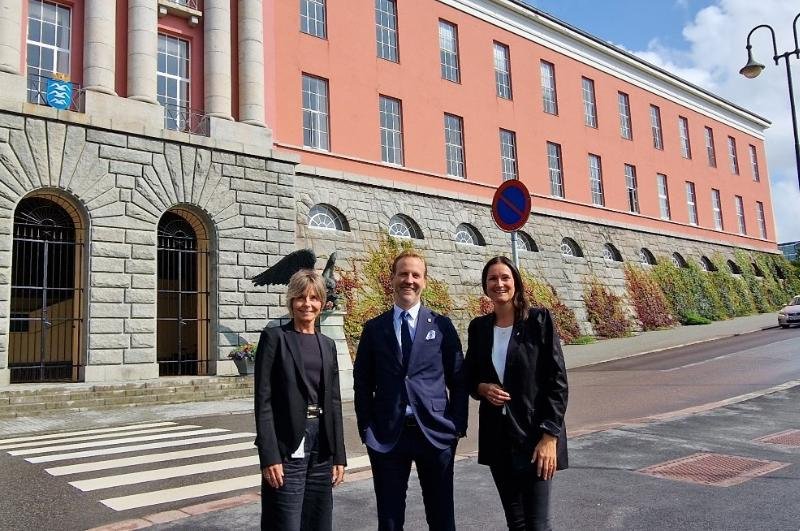In a groundbreaking step towards the future of urban transportation, Zeabuz has signed a Letter of Intent (LOI) with Haugesund Kommune to provide technology for Norway’s first autonomous city ferry. Scheduled to begin operations and technology testing in the fall of 2025, this initiative aims to connect three key locations using the cutting-edge Zeabuz Autonomy Systems, setting a new benchmark in sustainable maritime transport.
Haugesund Kommune’s Research and Development project is designed to create a national pilot for an autonomous, zero-emission city ferry. This ambitious project represents a significant leap forward in the application of autonomous technology within urban environments. The initial two-year test period will focus on gradually integrating self-driving capabilities and reducing crew dependency, providing a phased approach to autonomy that prioritizes safety and reliability.
Table of Contents
The Haugesund Autonomous City Vessel Project
The Municipality of Haugesund has solidified its commitment to innovation and sustainability by entering into agreements with three new partners for the research and development project titled “Zero-Emission Autonomous City Vessel.”
The newly onboarded partners – Torghatten, Zeabuz, and SEAM – bring a wealth of experience in managing complex and challenging innovation projects, positioning the initiative for success.
The project’s primary objective is to develop a zero-emission, autonomous vessel tailored to service the city of Haugesund. This vessel will connect key locations, including Haugesund City Centre, Vibrandsøy, and Risøy, significantly enhancing the area’s connectivity.
In the long term, the project aims to expand the vessel’s route to cover additional locations such as Karmøy, further integrating the city’s transport network.
The test period for the project has been set for two years. During this phase, the passenger vessel will undergo gradual development towards full autonomy and crew reduction, with a focus on ensuring safe and efficient operations.
The “Zero-Emission Autonomous City Vessel” project is a collaborative effort that includes a diverse array of partners such as the Municipality of Haugesund, Karmsund Havn, The University of Western Norway, Havnekraft, Remota, Maritime CleanTech, and Norce. This strong consortium underscores the project’s potential to set new standards in sustainable maritime transport.
Zeabuz’s Role in the Project
Following the LOI agreement, Zeabuz will be responsible for delivering the autonomy software that will be installed onboard the ferry. This advanced technology is critical to enabling the ferry to safely navigate and operate autonomously, even in the complex and dynamic maritime traffic conditions typical of urban waterways. The ferry’s route will initially connect Haugesund Center, Risøy, and Vibrandsøy, making the recreational island of Vibrandsøy more accessible to the public. This new connectivity is expected to stimulate local development, boost business, and enhance tourism in the region.
As the project progresses, Haugesund Kommune plans to extend the ferry’s route to include additional locations such as Karmøy, further expanding the network and its impact on the community.
A Strong Norwegian Consortium
The success of such an innovative project relies heavily on the expertise and experience of the partners involved. Veronica Charlotte Haugan, Project Manager for the Haugesund City Ferry, emphasized the importance of collaboration in achieving the project’s goals.
“Expertise and experience are crucial to the success of an innovative project like this. When the opportunity arose to bring in additional partners, we selected those who we believe are the most qualified in Norway for this field. With this strong and capable team, I am confident that we have everything needed to successfully develop an autonomous city ferry in Haugesund,” Haugan stated.
The project consortium includes a powerhouse of Norwegian industry leaders. Alongside Zeabuz, partners Seam and Torghatten bring invaluable expertise to the table. Zeabuz and Torghatten previously collaborated on the launch of the world’s first autonomous commercial passenger ferry, Estelle, in Stockholm in 2023, underscoring their capability to deliver on this ambitious new venture.
Zeabuz CEO Erik Dyrkoren expressed his excitement about the potential of this project to influence maritime transport on a global scale. “It is an honor to announce our recent LOI with Haugesund Kommune. We are seeing a maturing market and technological advancements, and the time feels right to scale the first three-point shortcut network. Haugesund Kommune has a strong maritime heritage and is eager to innovate, making it an ideal partner for introducing Norway’s first autonomous city ferry. The project will undoubtedly resonate beyond Norway’s borders. We look forward to introducing the solution for the world to see, and leveraging our learnings to further scale and enable autonomous technology to solve maritime challenges globally,”
The collaboration between Zeabuz and Haugesund Kommune marks a significant milestone in the evolution of autonomous maritime technology. By spearheading Norway’s first autonomous city ferry, this project not only aims to revolutionize local transport but also sets the stage for broader applications of autonomous technology in urban environments worldwide. As the project moves forward, all eyes will be on Haugesund, as it takes a pioneering role in shaping the future of maritime transport.
Source Zeabuz

